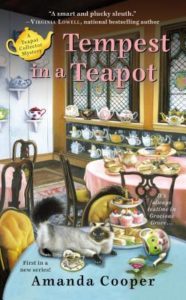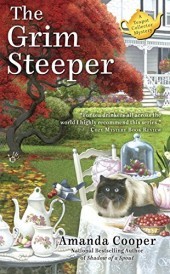 A Princess in Theory by Alyssa Cole
A Princess in Theory by Alyssa Cole
My rating: 4 of 5 stars
Dear Ms. Smith,
I hope that my letter finds you well. I, Likotsi Adelele, assistant to His Royal Highness, have sought you out high and low over the last few months, at the behest of the most exalted – and most curious – Prince Thabiso. He has tasked me with finding his betrothed, and I believe I have succeeded: it is you.
Naledi Smith lost her parents to a car crash when she was so young she barely remembers them. Without any other family, she lived in a series of foster homes until she aged out of the foster care system. Now in grad school and working multiple jobs to make ends meet, she has zero time for these weird emails that keep showing up, claiming that she is some sort of long-lost African princess, if only she will please send all of her personally identifying information to confirm.
Prince Thabiso grew up wondering whatever happened to the girl to whom he was betrothed when they were just small children. An only child, facing increasing pressure from his parents to settle down with a wife, he is extremely curious when his assistant believes she has tracked the woman down – and she lives in New York City, where Thabiso just happens to be headed on business.
A misunderstanding on first meeting gives Thabiso the chance to get to know Ledi personally before revealing his – and her – true identity. But will there be a way to finally tell her the truth without the betrayal coming between them?
Since this is a romance novel, you already know the answer to that: the happy ending is guaranteed. Oh, but the getting there. Ledi is the sort of character who is so real you would swear you know her. She hasn’t had it easy, and the walls she’s put up around herself are totally understandable. A scientist to the core, she thinks of the distance she puts between herself and others as a
social phospholipid bilayer: flexible, dynamic, and designed to keep the important parts of herself separate from a possibly dangerous outside environment. It had been working for the prokaryotes for eons, and it would suffice for a broke grad school student, which was only slightly higher on the evolutionary scale.
She is smart and funny, and a devoted friend, and she deals with everything that comes her way until her resilience is finally tested to the breaking point. She is a woman of color, working in a STEM field, and she has no family to support her. I loved getting inside her head and seeing the world through her eyes.
The third-person perspective shifts between Ledi and Thabiso, and Thabiso is also an absolute delight. He is honestly baffled by everyday things like taking the subway or cooking a meal from scratch, because he grew up having his every need or want taken care of without his having to even think about it. He so wants to step up and do the right thing… if he can only figure out what it is and how to do it. His assistant, Likotsi, seems to be the closest thing he has to a real friend. His parents are determined to see him married off and settled down to the business of managing the kingdom, navigating the complicated issues that come with the crown.
The kingdom of Thesolo comes across as something of a Vibranium-less Wakanda. It’s a gem of a country in the south of Africa that was never colonized, instead growing into a modern nation that maintains strong ties to its past. In my head, Queen Ramatla is totally Angela Bassett, and no one can convince me otherwise.
I enjoyed this book so, so much. There are elements of Cinderella and other fairy tales, but this is a thoroughly contemporary romance. Ledi and Thabiso have chemistry that leads to some very steamy scenes, yet Ledi is clearly aware of possible health risks (as an epidemiology grad student, one would hope so!) and how to be as safe as possible on that front. The dialogue is entertaining, even when it’s really only one-way, as when Ledi finally sends a two-word response to Likotsi’s “spam” emails. One of my favorites might be when the postdoc in Ledi’s lab approaches her, about to drop some more of his work on her. The entirety of the next paragraph reads: “This motherf***er, she thought.”
(I should note here that the redaction of the curse word is mine; the actual word appears in the book. If salty language and sexytimes on the page are not your thing, this is probably not the book for you!)
The next book in the series features Portia, Ledi’s best friend; the teaser chapter in the back promises good things. Personally, I’m hoping we eventually get a book about Likotsi. A girl can dream.
Source: Checked out from my public library
Challenges: It would qualify for Read Harder 2018 Task 10, but I’ve already completed that one.












